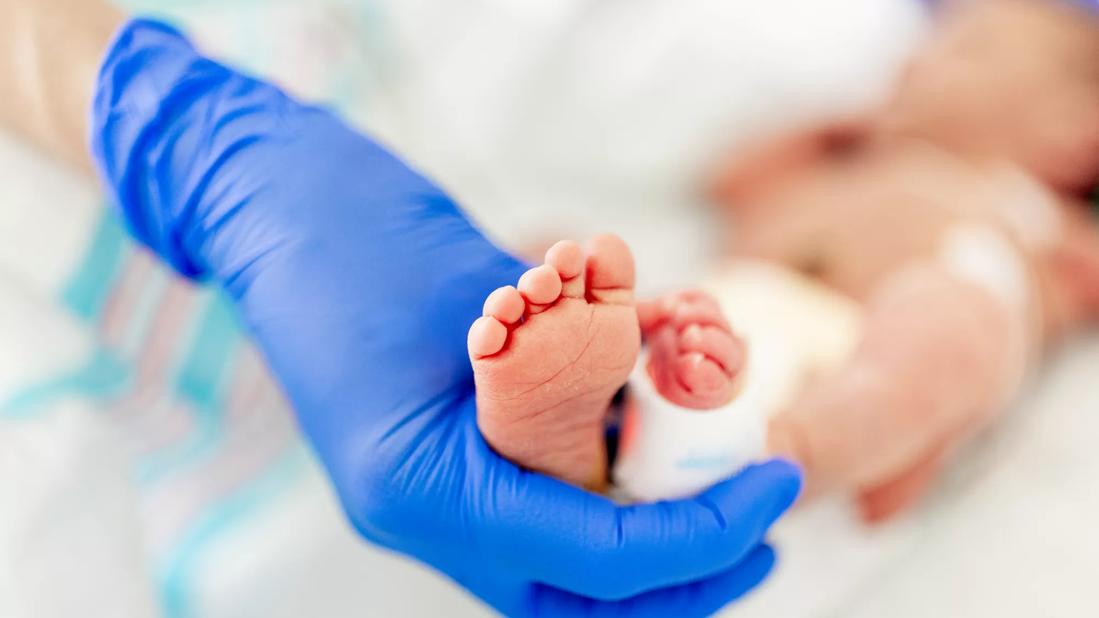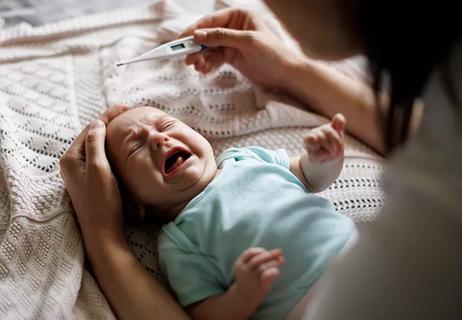Following an international call for proposals, experts ranked the following proposals

Clinical innovations in neonatology have historically faced roadblocks. Among other reasons, designing and executing studies that test safety and efficacy in a vulnerable patient population is a challenging pursuit. Neonatologists at Cleveland Clinic Children's aim to overcome barriers within the field by engaging colleagues in a dialogue about innovations on the horizon in neonatal care.
Advertisement
Cleveland Clinic is a non-profit academic medical center. Advertising on our site helps support our mission. We do not endorse non-Cleveland Clinic products or services. Policy
Innovation was the theme of the recent Symposium on Health Innovation and Neonatal Excellence (SHINE). The meeting, hosted in Orlando, included a variety of speakers and sessions and one element that introduced a new twist—a competition.
Following an international call for submissions of noncommercialized innovations, the symposium directors received 36 proposals from centers around the world. Submissions underwent a peer-review process by a scientific committee—a panel of distinguished neonatologists—and were evaluated based on originality and potential impact within the field.
Read on for a recap of the top seven projects underway, listed below in no particular order.
The current approach to screening for retinopathy of prematurity (ROP), the leading cause of childhood blindness, is both technically challenging for providers and physiologically stressful for neonates, and most will never require ophthalmic intervention. Researchers have developed two new camera technologies that combine ultra-widefield imaging and AI: one is a low-cost 2D camera, and the other is a 3D optical coherence tomography device. These technologies examine patients' retinas without the need for dilation, bright white light, scleral depression — or an ophthalmologist. The screening is completed in less than 10 seconds and provides immediate results. These innovations are poised to reimagine ROP screening by providing an objective evaluation, enhancing the patient experience and offering lower-cost technology for families and providers.
Advertisement
Presenting author: J. Peter Campbell, MD, Oregon Health & Science University
The bubble continuous positive airway pressure (bCPAP), a mainstay in neonatal care, has considerable limitations, including a circuit system prone to obstruction and leaks. Nurses and respiratory therapists must conduct frequent manual checks to resolve the issue. Currently, providers rely on bCPAP sounds to affirm the device is working properly. The project proposes to leverage acoustic sounds by converting them into electronic signals to help quantify pressure, oscillations and leaks. This could provide real-time insights into CPAP therapy, informing and optimizing the management of neonates.
Presenting author: Wissam Shalish, MD, PhD, Montreal Children's Hospital, McGill University
This innovation uses a deep learning algorithm trained on video and physiological data to detect and quantify events in the NICU. The project addresses a need within neonatal care for accurate and continuous monitoring of infant stressors, which are currently captured manually with the Neonatal Infant Stressor Scale. The trained model can accurately estimate short-term physiological responses and identify activities that induce significant stress responses. Researchers are hopeful that the technology can facilitate earlier detection of adverse events and support appropriate interventions to improve outcomes.
Presenting author: Ryan M. McAdams, MD, University of Wisconsin-Madison
Continuous positive airway pressure (CPAP) is a noninvasive and effective alternative to nasal cannula therapy for infants and neonates experiencing respiratory distress. However, the nasal interface consists of multiple pieces that can make assembly burdensome and dislodgment of the interface a common occurrence. This project aims to reimagine the device by developing a single-piece nasal CPAP interface that integrates multiple components into a secure, ergonomic and scalable product. The device could lead to improved use and adoption, offering a low-cost, high-impact option for a broader patient population.
Advertisement
Presenting author: Mohamed Mohamed, MD, Cleveland Clinic Children's
Conventional approaches to assessing opioid withdrawal in infants rely on subjective clinical observation of symptoms. A new algorithm-based technology, the physiologic opioid withdrawal score (POWS) system, offers an objective, real-time monitoring option. It's trained on retrospective data of infants with neonatal opioid withdrawal syndrome (NOWS) and, taken together with physiologic data, the proposed tool—a portable, hospital-grade device— aims to continuously monitor vital signs to improve treatment timing and reduce variability.
Presenting author: Zachary Vesoulis, MD, Washington University
Necrotizing enterocolitis (NEC) is one of the leading causes of death in preterm infants. Early detection and intervention of malperfusion can mitigate fulminant NEC. Near-infrared spectroscopy (NIRS) is the gold standard for measuring intestinal perfusion; however, it is imprecise, as it also includes cerebral NIRS for abdominal applications. Researchers have developed a novel computational model to enhance existing technology by utilizing an algorithm that predicts the NIRS fluence rate signal in the neonate's abdomen. This approach could significantly improve early detection and offer a cost-effective, scalable solution for reducing neonatal mortality.
Presenting author: Vishnu S. Emani, BS, Harvard University
Trinity Tube is a multifunctional, sterile, single-use nasogastric feeding tube. It integrates enteral feeding with vital sign monitoring, including ECG, temperature and continuous airway pressure assessment. Designed specifically for neonatal care, it eliminates the need for skin-mounted sensors, thereby reducing the risk of skin injury and infection. It also contains a pressor sensor that supports continuous non-invasive assessment of airway pressure and allows teams to transition infants to “pressure targeted high flow therapy,” a novel approach that combines high-flow nasal cannula with the effectiveness of CPAP. The device aims to simplify care, improve the patient experience and reduce the nursing burden in NICUs.
Advertisement
Presenting author: Alan Groves, MD, University of Texas at Austin
Advertisement
Advertisement

The infant fever care path is an interactive, step-by-step tool within the electronic health record that reduces high variability among standard practices to ensure safe, quality care at all Cleveland Clinic locations

New program brings ‘all hands on deck’ to reduce infant mortality

Specialized clinic provides comprehensive care for pediatric patients with a high-risk history

Integrated care model reduces length of stay, improves outpatient pain management

A closer look at the impact on procedures and patient outcomes

Experts advise thorough assessment of right ventricle and reinforcement of tricuspid valve

Study also finds that 26% of children with cancer have mutations in DNA repair genes

A closer look at current uses and future opportunities